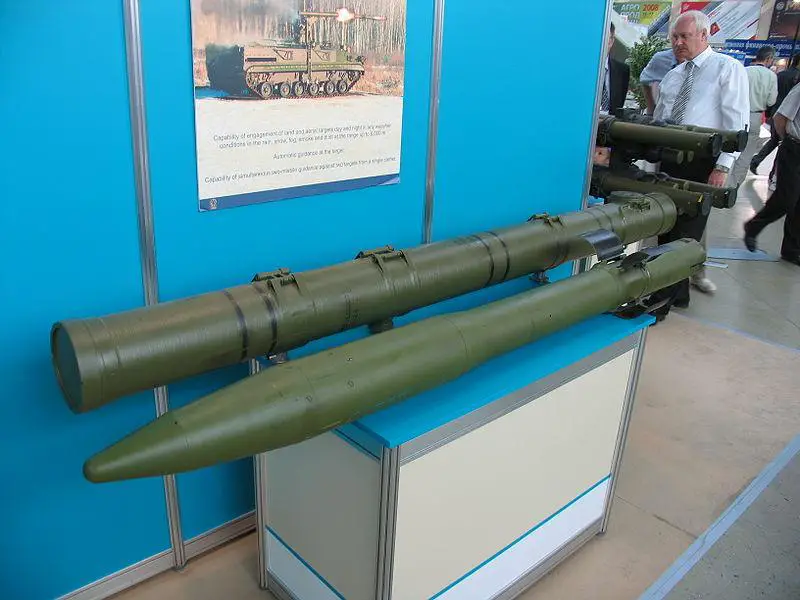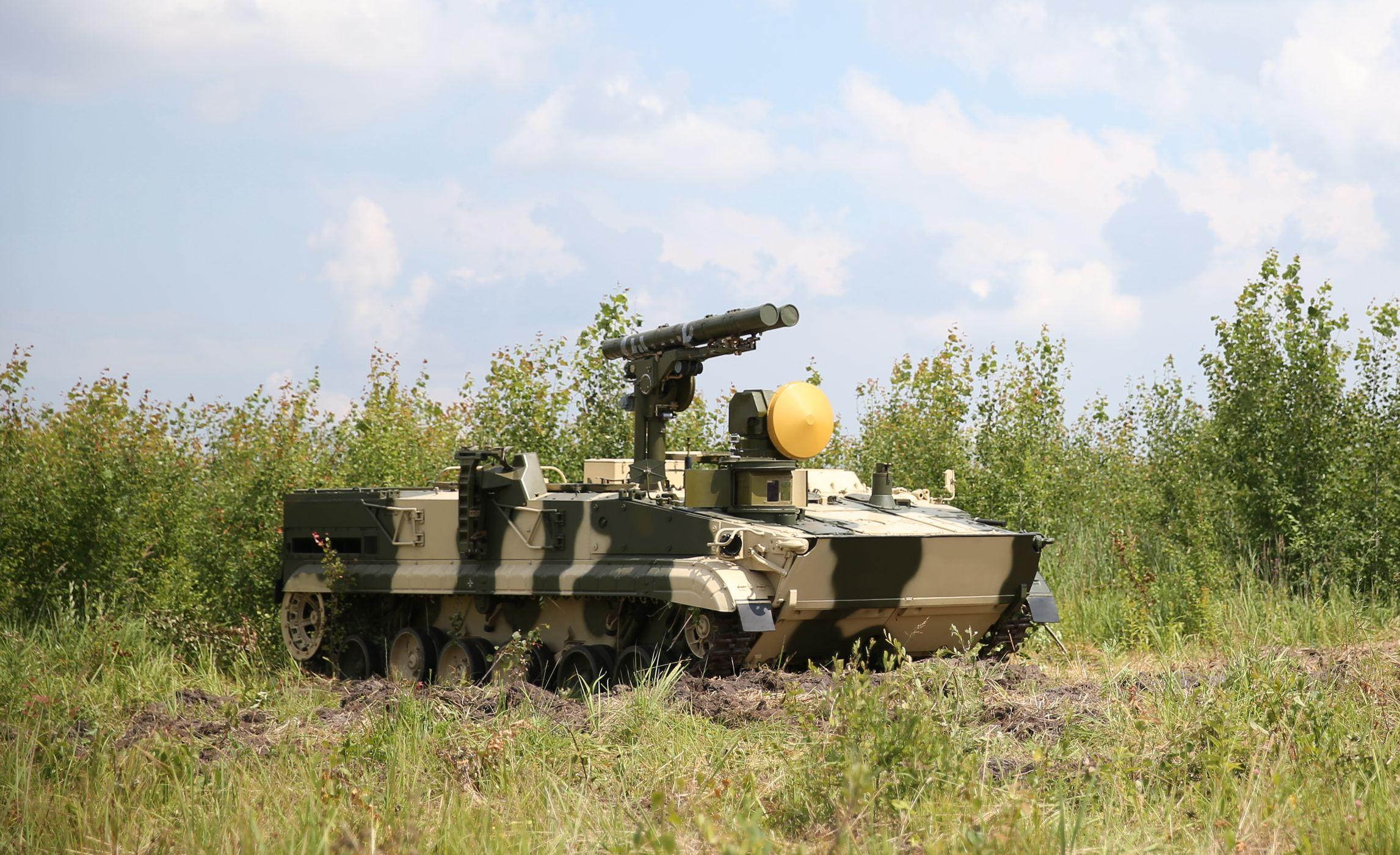Tass reported that Russia’s major design, research, and production center, KB Mashinostroyeniya (the Machine-Building Design Bureau, part of Rostec state corporation) is modernizing the Khrizantema missile, one of the most powerful anti-tank missiles in the world. The missile had started development in the 1980s and was designed as an all weather, multi-purpose missile system that could defeat current and future armoured units equipped with advanced armour protection, such as Explosive Reactive Armour (ERA). The Khrizantema anti-tank missile was unveiled in July 1996 by KB Mashinostroyeniya.
The 9M123 Khrizantema (Chrysanthemum, NATO reporting name AT-15 Springer) is a Russian anti-tank guided missile. Khrizantema was designed to deal with current and future generations of main battle tanks and can also be used to engage slow and low flying aerial targets like helicopters. The 9M123 missile together with its associated guidance system forms the 9K123 missile system. Khrizantema was envisaged as a replacement for a variety of different types of anti-tank missiles that remained in service with the Russian military, such as the 9K114 Shturm and the 9M120 Ataka-V. The system entered service with the Russian armed forces in 2005.

The 9M123 missile is supersonic, flying at an average speed of 400 m/s or Mach 1.2 and has a range of between 400 and 6,000 meters. Propulsion is achieved by way of a single solid fuel rocket motor with two exhausts on either side of the missile. The off-set exhausts cause the missile to spin during flight. Guidance control is provided by two pop-out control surfaces at the rear of the missile. Each missile carries a tandem HEAT warhead with a reported penetration of 1100–1250 mm RHA (Rolled Homogeneous Armour) behind ERA. Alternatively, a thermobaric warhead can be carried to engage soft-skinned targets, fortifications and manpower.
It is currently launched from the 9P157-2 Khrizantema-S tank destroyer, Mi-28 Havoc attack helicopter and most likely in the near future from the Ka-52 Alligator attack helicopter as well. The Khrizantema is unique among Russian anti-tank guided missiles as, depending on the variant of the missile, it can either be guided by laser or radar. The dual guidance system ensures protection against electronic countermeasures and operation in all climatic conditions, day or night. . This dual guidance system allows two missiles to be fired at two separate targets at once, with one missile guided by laser and the other by radar.
